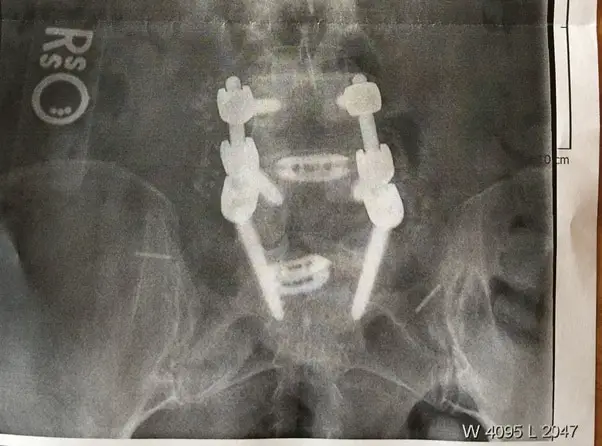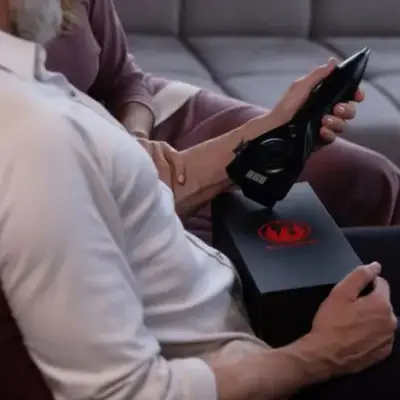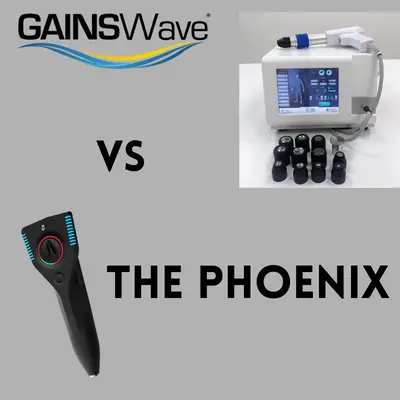A TENS unit, or transcutaneous electrical nerve stimulation unit, is used to relieve pain in many areas of the body by sending electrical pulses along nerve pathways to disrupt pain signals. Before using a TENS unit, it is important to know that some areas and conditions make use of a TENS unit unsafe.
You can use a TENS unit with titanium rods in your back, but you should not use a TENS unit on a recent surgical site that still has damaged skin. Always consult your doctor or other medical providers if you have concerns about the safety of a new medical treatment.
This article will discuss how a TENS unit works, where it can be used, and what conditions make use of a TENS unit unsafe.
How a TENS Unit Works
TENS therapy, or transcutaneous electrical nerve stimulation therapy, works by sending low-voltage electrical currents at or near nerves to block or change the perception of pain. The device used to deliver these currents is called a TENS unit, which delivers electricity through electrodes on the surface of the skin near the center of the pain.
There are two theories about the primary way that TENS therapy works. The first suggests that the electrical currents stimulate nerve cells in a way that stops them from giving and receiving pain signals. The second is that the stimulation creates endorphins, which counteract the perception of pain.
The Procedure
A TENS unit is a small, handheld device connected to several sets of electrodes, which are then connected to two inch by two inch (five by five centimeter) pads that are placed on the skin. Alternatively, an acupuncturist may connect the electrodes directly to acupuncture needles. Either way, the electrodes connect to specific areas at nerve sites in the body.
The electrodes then deliver electrical energy in pulses, either continuously or in bursts. The frequency, intensity, and duration vary according to the device settings, usually chosen by an administering doctor, physical therapist, or acupuncturist.
You can also purchase and use a TENS unit at home, like this OMRON model.
Medical Rods
Medical rods and screws are used to hold the bones in place so that they can heal appropriately following a major injury or surgery, such as spinal surgery or a femur repair.
Medical rods may also be used in treatments of scoliosis in order to correct a bending of the spine.
In either case, these rods are often made of titanium or a titanium alloy of titanium, aluminum, and vanadium. These rods are also sometimes coated with another substance to make sure that the rod bonds with the bone after it is implanted. Some of these rods are more flexible, while others are less. In children, these rods may be both flexible and able to expand with growth.
Medical rods work by creating a kind of brace for the joint so that the patient can resume normal activities more quickly without worrying about disrupting the connection of bones while they still are unstable and healing.
Medical Rods and TENS
Because a TENS unit has a relatively low voltage, its electrical field will not penetrate into the body deeply enough to reach medical rods of any kind. It is safe to use a TENS unit on the back after spinal surgery or other procedure that requires titanium or stainless steel rods to be placed in the back.
However, you should always make sure that your doctor, physical therapist, or acupuncturist is aware of your medical history before starting any new procedure, and you should ask your medical provider before using a TENS unit if you have any concerns about safety.
TENS Therapy Uses
TENS therapy can be used to treat many kinds of pain, both long-lasting, chronic pains, and short-term pain. However, there are a number of conditions that are most commonly treated by the use of a TENS unit:
- Osteoarthritis: disease of the joints
- Fibromyalgia: aching along the spine and near other joints, muscles, and tendons
- Tendinitis: inflammation of the tendon
- Bursitis: inflammation of the bursa, a fluid-filled sac that cushions the joint
- Labor and childbirth pain
- Pelvic pain
- Diabetic neuropathy: damage to the nerves connecting the spinal cord and brain to the rest of the body
- Peripheral artery disease: a disease of the arteries, which circulate blood from the heart to the rest of the body
TENS unit pads can also be placed in the following areas for any kind of pain:
- The back of the neck
- The abdomen
- The back
- The hip
- The knee
- The shoulder
- The lower back
- The upper back
For help with proper electrode placement, see this reference. It is very important that you place the electrodes in the correct spots, as the electrodes must be in line with the nerve pathways.
Video guide for lower back pain:
Cases Where TENS Therapy Should Not Be Used
Generally, the risk of TENS therapy interfering with a condition or device is only a concern if you are using the unit at or near the site of the problem or device. However, it is important to read about your specific condition and ask a medical professional to be sure that the device is safe for you to use.
In the following cases, there is a risk of a TENS unit doing damage:
- If you have an implanted device like a blood pressure monitor, defibrillator, or neurostimulator
- If you are pregnant, you should not use the device near your abdomen, pelvic area, or lower back, or acupuncture points at the hand, knee, or ankle (although a TENS unit can be used in labor)
- If you have undiagnosed pain and have had a cancer diagnosis within the last five years
- If you have cancer
- If you are prone to seizures, do not apply the device to your head, neck, or shoulders
- If you have deep vein thrombosis or other diseases affecting the veins, the TENS unit increases the risk of a blood clot
- If you have a bleeding disorder
- If you have heart disease, do not apply the unit to your chest
And, a TENS unit should never be used in the following areas:
- At the site of infected tissues
- To any site recently treated with radiation
- To damaged skin
- Near the eyes, mouth, front or side of neck, or head
- Near reproductive organs
- To areas of the body without sensation
Finally, a TENS unit should only be used on a person who is fully capable of communicating and can give feedback about how the therapy is working and whether they are feeling any pain or other concerning sensations.
Other Risks
Even when a TENS unit is used appropriately, there are a few risks to be aware of before considering treatment. Possible side effects include:
- Burns on the skin
- Irritation or rash from the pad adhesive
- Discomfort with the tingling sensation during treatment
These side effects are generally mild, but you should ask your medical provider if you have concerns.
Conclusion
It is safe to use a TENS unit with titanium rods in your back, but you should always talk to your medical provider about a new medical procedure if you have concerns, even if you’re using an over-the-counter unit at home. There are also many conditions and placements that are not safe for a TENS unit, including any damaged skin.
Sources
- PubMed: Rods in Spinal Surgery
- Medline Plus: Femur Fracture Repair
- Cleveland Clinic: Transcutaneous Electrical Nerve Stimulation
- WebMD: Can TENS Help Your Pain?
- WebMD: TENS for Back Pain
- Transcutaneous Electrical Nerve Stimulation (TENS): Procedure Details
- Cleveland Clinic: Transcutaneous Electrical Nerve Stimulation (TENS): Risks/Benefits
- TENS Units: Electrode Placement
- Physical Therapy: Transcutaneous Electrical Nerve Stimulation for Pain Control After Spinal Fusion with Harrington Rods: A Clinical Report
- Wikipedia: Harrington Rod
- Pain: Pain relief after low back surgery: The efficacy of transcutaneous electrical nerve stimulation
- University of Maryland Medical Center: Lumbar Fusion





2 responses to “Can You use a TENS Unit with Titanium Rods in your Back?”
[…] main difference between these two lies in control unit longevity. For example, when a unit with removable batteries powers down, you can replace the batteries and the unit will simply bo… up. But when a lithium battery dies for the last time, there’s no bringing it back. You’ll have […]
[…] they are at reducing back pain. We’ll also prepare you to find the best and most effective TENS unit for back pain so that you can face the browsing list with a sense of confidence and […]